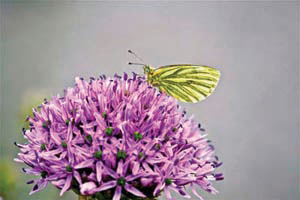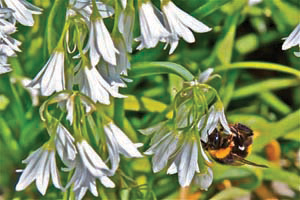August 1, 2014
By Judy Enright
Special to the BIR
Every year, the Irish Tourist Board chooses a special theme to promote the many plusses of this stunning country. One year, the focus was on spas, spa treatments, and places that offered spa packages. Last year it was “The Gathering,” and this year, the emphasis is on “The Wild Atlantic Way,” a recommended driving route that skims along the glorious Western seaboard for 1,600 miles from the Inishowen Peninsula in Donegal to Kinsale in Co. Cork.
Several years ago, the tourist board promoted the country’s offshore islands. Some are uninhabited, rugged, and remote, but brilliant for walkers and hikers, bird watchers, and nature buffs; others, like Ireland’s largest islands – Achill in Co. Mayo, and Valentia, in Co. Kerry – are accessible by road, populated, and a magnet for tourists.
We thought the island promotion was excellent because so many visitors drive around or take coach tours but never venture out to see the islands, and that’s a real shame.
 A specimen from the beautiful, lush gardens on Garinish Island in Bantry Bay. Judy Enright photos
A specimen from the beautiful, lush gardens on Garinish Island in Bantry Bay. Judy Enright photos
GARINISH
One especially colorful and lovely island – and a great place to see in bloom - is Garinish (also called Ilnacullin) in Glengarriff Harbor, Co. Cork. The 37-acre island is easily reached by boat and ferries and private charters are available around the harbor. A highlight for me was watching seals basking lazily on warm, sunny rocks as we ferried out to Garinish.
John Annan Bryce, MP, and his wife, Violet, bought the island from the British War Office in 1910 and created the magical island that has endured long past their lifetimes. The Bryces were convinced that, with its sheltered location and the warm Gulf Stream, a wide range of tropical plants could be grown there. They were right.
The Bryces initially planned a mansion and extensive garden on the island so they commissioned the eminent English architect Harold Ainsworth Peto to design them but, while he designed and engineered the gardens, the mansion was never built. Instead, the Bryces built an expansive cottage where they entertained many notable guests, including George Bernard Shaw.
Peto created a formal architectural garden with an Italian teahouse and pavilion, formal pool, and Grecian temple. After the death of John in 1923, Violet further developed the gardens, and in 1932, their son, Roland, took over and continued adding plants from all over the world under the guidance of Murdo Mackenzie, a noted Scottish gardener.
 An Irish bee savors the nectar from a bloom on Garinish Island in West Cork.
An Irish bee savors the nectar from a bloom on Garinish Island in West Cork.
When Roland died in 1953, the island was bequeathed to the Irish people and its care entrusted to Ireland’s Office of Public Works. Mackenzie continued to oversee the gardens until he retired in 1971.
If you have an interest in gardens and the brilliant color of specimen flowers, bushes, trees, and complementary architecture, this island is not to be missed. There is an admission fee and Garinish is open until October. Facilities include toilets and a coffee shop with light snacks.
For more information, visit heritageireland.ie, glengarriff.ie, or look for other websites. If you are in the area Aug. 22-24, be sure to stop by The Arts Glengarriff’s inaugural festival. You might be lucky enough to spot screen legend Maureen O’Hara there. O’Hara, a Dublin native, starred in “The Quiet Man” with John Wayne, and is said to have a holiday home in Glengarriff.
OTHER ISLANDS
The tourist board writes, “Wild, rugged and beautiful, Ireland’s islands have captured the imagination for thousands of years. Prehistoric settlers, early Christian monks, Vikings, pirates, farmers, and fishermen have all put down roots here, building communities whose ruins stick like bones from the landscape.” Today, these islands “are alive with …regattas, lively ceilis, buzzing pubs, burgeoning foodie scenes and year-round activities.”
Islands where there is overnight accommodation include: Arranmore, Tory, and Island Roy (all in Donegal); Achill, Clare, Inishturk (all in Co. Mayo); Inishbofin and the three Aran Islands (all in Co. Galway); Bere, Cape Clear, Heir, Sherkin (all in Co. Cork); and Rathlin in Co. Antrim, Northern Ireland.
You can find water transport readily available for day trips to Inishbofin in Co. Donegal as well as Inishfree and Gola, also in Donegal; Inishbiggle in Co. Mayo, Ceantar na Oilean, (a group of islands) in Connemara; Long, Whiddy, Dursey and Garinish, Co. Cork, and the Blaskets and Skelligs in Co. Kerry.
SKELLIG MICHAEL
Skellig Michael, eight miles off the coast of southwest Co. Kerry, is a UNESCO World Heritage Site with a 1,000-year-old stairway leading to a small cluster of huts, oratories, chapel, and stone crosses. Access depends on weather and visitors are advised to bring water and wear protective clothing. There are no facilities and walking is the only option with some degree of fitness required to negotiate the stairway. See the website skelligexperience.com for details and stop by the Skellig Experience visitor center on Valentia Island to learn more.
Next to Skellig Michael are Little Skellig (home to more than 30,000 pair of gannets) and Puffin Island (of international importance, according to BirdWatch Ireland, for its seabird colonies, “most notably Puffins (5,000-10,000), Manx Shearwaters (20,000) and Storm Petrels. There are also several hundred pairs of nesting Razorbills, Guillemots, and Kittiwakes.”
THE BLASKETS
If you’re driving around the Dingle peninsula, a stop at the Blasket Center in Dunquin, is well worth the time and small admission fee.
The Center tells the story of families who lived on the remote Blaskets until their evacuation in 1953 and highlights traditional island life, the subsistence fishing and farming, modes of work and transport, home life, housing, and entertainment.
The Center details the community’s struggle for existence, language, and culture, and the extraordinary literary legacy left behind. We thoroughly enjoyed the exhibitions, audio-visual presentations and artwork there.
VALENTIA ISLAND
I love the sense of humor displayed by the writer of this description of Valentia on the island’s informative website, (valentiaisland.ie): “Apart from the Google thing on the Interweb, we can also be located easily from the air – there is a small island to the east of us called ‘Ireland.’ They have airports, ports and motorways that will all help in getting you here. The natives on that island (Ireland) are, in the main, friendly, and will direct you to us grudgingly.’”
Valentia Island has many Megalithic monuments, standing stones, cairns, and wedge tombs, along with remains of beehive huts from the early Christian period. In more recent times the first transatlantic cable was laid by the world’s largest ship, The Great Eastern, in 1865, connecting Valentia with Newfoundland (and London and Europe with America.) A dramatic recent discovery is the ‘Tetrapod Trackway’ - 150 footprints showing the path of a prehistoric dinosaur that came ashore on Valentia between 350 million and 370 million years ago.
If you’re traveling with kids and other animal lovers, be sure to take in the Hillside Haven Pet Farm’s rare breeds of poultry, pigs, miniature ponies, and donkeys, among others. And, don’t miss the island’s slate quarry that opened in 1816 and has been a working quarry off and on since. The quarry provided slate for the Paris Opera House, London’s Houses of Parliament, and billiard tables, including those made for the Duke of Wellington and Queen Victoria.
There are numerous accommodations on Valentia - B&Bs, self-catering, and hostels - and there are restaurants, pubs, and a heritage center. Valentia is accessible by road over a bridge from Portmagee, Co. Kerry, and by car ferry (from April to October) from Renard Point, Cahersiveen. The ferry crossing takes five minutes and is a continuous shuttle ferry that operates every ten minutes, seven days a week (April to October) from 7:45 a.m. to 9:30 p.m. and Sundays, 9 a.m. to 9:30 p.m. In July and August, the last ferry is at 10 p.m.
There is a lot to be seen and enjoyed on Ireland’s islands. Do take a look and enjoy Ireland whenever and wherever you go.

